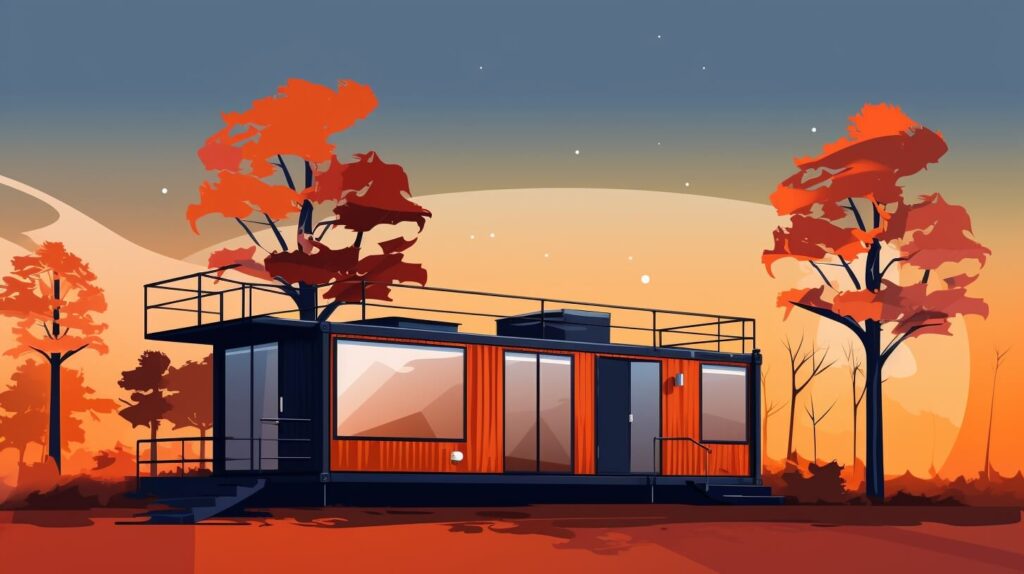
We are reader-supported. When you buy through links on our site, we may earn an affiliate commission.
In the past two decades, the percentage of older adults staying in assisted living facilities has declined, with more people opting to stay in traditional homes and age in place. According to a 2023 American Advisors Group survey, 92% of older adults surveyed said they would prefer to live out their years in their current home. Another study found that 77% of adults over 50 wish to age in place.
With current trends favoring aging in place over retirement facilities, you might want to consider how you can make your home more accessible and comfortable for your future needs. It’s never too early to adjust your home and plan for accessibility!
6+ Ways to Make Your Home More Accessible
Make your home the perfect aging-in-place space with these top considerations.
1. Increase the Lighting

Something that becomes critical for older adults is indoor lighting. Many older individuals mention they need more light as time goes by. A great way to prepare your home for the future is to consider the light in your space. Maximize both natural light and electrical lights.
Focus on window treatments or curtains that open entirely during the day to increase the sunlight entering your home. Also, invest in bright lamps and overhead lights that you can seamlessly adjust.
Older adults estimate that they need double the amount of light they previously needed to read or enjoy hobbies, so it is key to enhancing your house.
2. Adapt the Thresholds, Levels and Ramps
Your home may have a step-up when transitioning from one space to another. For example, you may have a step-up from the dining room to the kitchen or from the kitchen to the laundry room.
In new builds, you can opt to remove these barriers and keep the surface level to make your home more accessible. Also, if you’re space planning for a two- or three-story new build, consider keeping essential living spaces on the first floor.
In existing step-ups, you can install a ramp to enhance your space.
In terms of decorating, you can still use rugs or carpets for your flooring — it gives wheelchairs traction if a person wants to pivot or move around a space. Avoid shag carpets or high-pile carpets. Instead, consider a low-pile rug with a no-slip mat underneath, which you can easily get from Amazon.
3. Optimize the Bathrooms
Adding to your bathroom will also help with your future needs.
Curbless showers are an excellent way to make your bathroom more comfortable and accessible for aging in place. A curbless solution provides a barrier-free way to enter a shower, even if you have a walker or wheelchair, making maneuverability super.
Consider the tiles in your bathroom. Your tiles should be small and nonslip, with lots of grout in between to help with grip. Mosaic designs are often popular. You can also get stickers to paste into your bathtub or shower to improve traction and enhance safety.
Installing a detachable shower faucet is also handy. This feature allows a person to clean themselves with the nozzle while sitting in a wheelchair or on a shower seat or built-in ledge, giving an older adult greater independence while aging in place.

Another tip is moving the shower controls or making them accessible outside the shower. This way, a person in a wheelchair doesn’t have to be drenched by a cold spray of water when they initially put the shower on or twist awkwardly from outside to try to reach.
Grab bars are also must-adds to make your bathrooms secure. Fortunately, these grip bars have come a long way in appearance. You can get grab bars to match your existing fixtures and accessories.
4. Install Roll Under Sinks
If you or a partner needs to use a wheelchair in the future, you may need to adapt your home to improve maneuverability. Open roll-under sinks are a great way to do this.
Avoid angled roll-under sinks and think of aspects like mirrors. You want your mirrors to be low enough for people in wheelchairs to see themselves and tall enough to accommodate guests or people in your home when standing.

5. Enhance Storage and General Accessibility
While on the topic of accessibility, change up any door knobs to lever handles. Older adults say these are easier to operate, especially if they start struggling with arthritis flairs. Consider other handles in your home, too.
In terms of storage, consider having open storage so that reaching for an item in the kitchen or lounge is easy. If you prefer the look of closed cupboards, maybe choose cupboard designs that slide or fold open easily, even if you have a walker or wheelchair.

Heights are also important, but it isn’t easy to give exact guidance because they will differ in each home or situation. Just bear in mind that your counters, vanity, tables, beds and furniture may need to be adjusted. For example, really low couches or beds are difficult to get up from, while high beds or bar stools may be challenging to get on.
A guideline for your countertops is between 32 and 34 inches tall to accommodate manual wheelchair users or people using walkers. Power chairs are slightly taller, so 34- to 36-inch tops may make more sense.
6. Maximize Space Planning
Review your home and see whether there’s enough space and maneuverability. Are your doors wide enough? Is there ample space to move throughout the house without knocking into or over items?
What do you need to implement now to meet your future needs?

7. Leverage Smart Technology
Smart home appliances move beyond items of convenience and into the realm of necessity when adapting your home for aging in place.
Whether you opt for voice command technology or touchscreens, you can rig up your house to meet your needs. For example, connecting your lights and thermostats to smart tech is a great way to give you greater control of your property. Depending on your needs, you may consider tactile buttons, touchscreens or voice-operated systems.
You can also upgrade your security systems with smart technology, getting products from door and window sensor technology, to smoke and carbon monoxide detectors and video cameras. Consider smart emergency contact systems, like smartwatches, to contact your loved ones or in-home caregivers at the touch of a button.
Optimizing Your Home for Aging in Place
If you are among the 92% of older adults who want to spend your golden years at home instead of a retirement facility, you should start planning and improving your house to meet your future needs. Some older individuals build granny flats on their family’s property, while others adapt an existing space in a family home in what is known as a mother-in-law or an in-law suite.
No matter your plans, you can optimize where you plan to live to be the ultimate aging-in-place space today.







